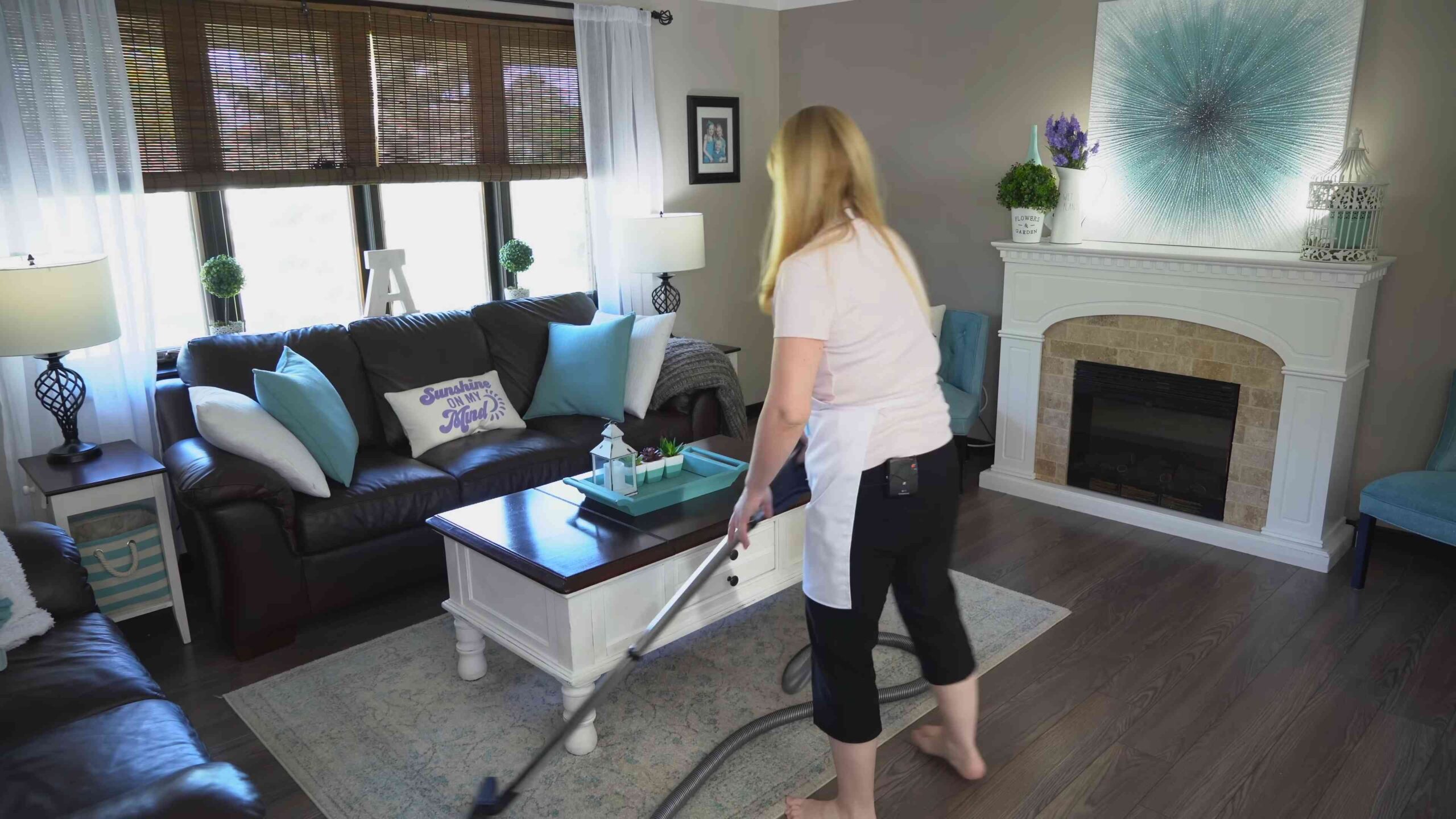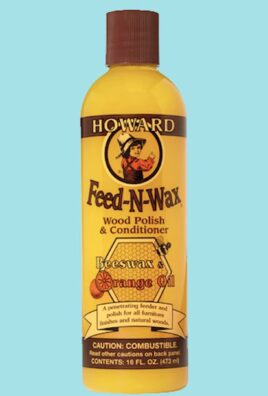Overwhelmed Home Cleaning Plan? Don’t worry, you’re not alone! We’ve all been there – staring at a mountain of mess, feeling defeated before we even begin. The good news is, conquering your cleaning chaos doesn’t require a Herculean effort. It just needs a smart, strategic approach. Think of it as decluttering your mind as much as your home!
For centuries, cultures around the world have emphasized the importance of a clean and organized living space. From the ancient practice of Feng Shui, which focuses on harmonizing your environment, to the simple satisfaction of a tidy home, the benefits are undeniable. A clean home isn’t just aesthetically pleasing; it’s also linked to reduced stress, improved focus, and even better sleep.
But let’s be honest, life gets busy! That’s why I’m sharing my tried-and-true DIY tricks and hacks to create a manageable overwhelmed home cleaning plan. These aren’t just quick fixes; they’re about establishing sustainable habits that will keep your home sparkling without sacrificing your sanity. We’ll break down the daunting task into bite-sized pieces, tackle those neglected corners, and create a cleaning schedule that actually works for you. Ready to transform your home from chaotic to calm? Let’s dive in!

Conquering the Cleaning Chaos: A DIY Home Cleaning Plan That Actually Works!
Okay, let’s be honest. We’ve all been there. You look around your house and it feels like a cleaning monster has taken over. Dust bunnies are breeding, the kitchen sink is a science experiment, and you’re pretty sure you saw a rogue sock gain sentience. Don’t panic! I’m here to help you break down the overwhelming task of cleaning into manageable, dare I say, even *enjoyable* chunks. This isn’t about achieving spotless perfection; it’s about creating a clean and comfortable space where you can actually relax.
The Secret Weapon: A Customized Cleaning Schedule
The key to avoiding cleaning overwhelm is a solid plan. We’re not talking about a rigid, military-style schedule that will make you miserable. Instead, we’re crafting a flexible, personalized plan that fits your lifestyle and priorities.
* Identify High-Traffic Areas: Think about the rooms you use most often. For most of us, that’s the kitchen, bathrooms, and living room. These areas will need more frequent attention.
* Prioritize Tasks: What bothers you the most? Is it the overflowing laundry basket, the dusty surfaces, or the perpetually sticky kitchen floor? Focus on tackling those pain points first.
* Break It Down: Instead of trying to clean the entire house in one go, divide tasks into smaller, more manageable chunks. Think 15-30 minute bursts.
* Schedule It In: Treat cleaning like any other important appointment. Block out specific times in your calendar for cleaning tasks. Even 15 minutes a day can make a huge difference.
* Be Realistic: Don’t try to do too much at once. Start small and gradually increase the frequency and intensity of your cleaning as you get into the habit.
* Rotate Deep Cleaning Tasks: Deep cleaning tasks like cleaning out the fridge, washing curtains, or cleaning grout don’t need to be done every week. Rotate them on a monthly or quarterly basis.
* Delegate (If Possible): If you have family members living with you, don’t be afraid to delegate tasks. Even young children can help with simple chores like putting away toys or wiping down surfaces.
Step-by-Step: Creating Your Cleaning Schedule
Ready to put this into action? Let’s create your personalized cleaning schedule.
1. Assess Your Current Situation: Take a walk through your house and make a list of all the areas that need attention. Be specific! Instead of just writing “living room,” write “dust coffee table,” “vacuum rug,” “wipe down shelves.”
2. Categorize Tasks: Divide your list into daily, weekly, monthly, and quarterly tasks. Here’s an example:
* Daily: Make beds, wipe down kitchen counters, sweep kitchen floor, do a load of laundry.
* Weekly: Clean bathrooms, vacuum/mop floors, dust surfaces, empty all trash cans.
* Monthly: Clean out fridge, wash bedding, clean mirrors and windows, dust light fixtures.
* Quarterly: Deep clean appliances (oven, dishwasher), wash curtains, clean grout, declutter closets.
3. Allocate Time: Estimate how long each task will take. Be honest with yourself! It’s better to overestimate than underestimate.
4. Create a Schedule: Use a planner, calendar app, or even a simple spreadsheet to create your cleaning schedule. Assign specific tasks to specific days and times. For example:
* Monday: 15 minutes – Wipe down kitchen counters and sink after dinner.
* Tuesday: 30 minutes – Clean one bathroom.
* Wednesday: 15 minutes – Sweep kitchen and dining room floors.
* Thursday: 30 minutes – Dust living room and bedrooms.
* Friday: 15 minutes – Vacuum high-traffic areas.
* Saturday: 1 hour – Deep clean one area (e.g., clean out fridge).
* Sunday: Rest! (Or catch up on any missed tasks.)
5. Be Flexible: Life happens! Don’t beat yourself up if you miss a task. Just reschedule it for another day. The key is to be consistent, not perfect.
6. Review and Adjust: After a week or two, review your schedule and see if it’s working for you. Are you able to stick to it? Are there any tasks that need to be adjusted? Don’t be afraid to tweak your schedule until it feels right.
Essential Cleaning Supplies: Keeping It Simple
You don’t need a million different cleaning products to keep your house clean. In fact, a few basic supplies can go a long way. Here’s my list of essentials:
* All-Purpose Cleaner: A good all-purpose cleaner is essential for wiping down surfaces, cleaning countertops, and tackling spills. I personally love using a diluted vinegar solution (equal parts vinegar and water) for many surfaces.
* Bathroom Cleaner: A dedicated bathroom cleaner is helpful for tackling soap scum, mildew, and hard water stains.
* Glass Cleaner: For streak-free windows and mirrors.
* Floor Cleaner: Choose a floor cleaner that’s appropriate for your flooring type (e.g., hardwood cleaner, tile cleaner).
* Disinfectant: For disinfecting high-touch surfaces like doorknobs, light switches, and toilet handles.
* Microfiber Cloths: These are great for dusting, wiping down surfaces, and cleaning windows. They’re also reusable and washable, which is a bonus.
* Sponges: For scrubbing and cleaning.
* Paper Towels: For cleaning up spills and messes.
* Vacuum Cleaner: A good vacuum cleaner is essential for keeping your floors clean.
* Mop and Bucket: For mopping floors.
* Rubber Gloves: To protect your hands from harsh chemicals.
* Spray Bottles: For mixing your own cleaning solutions.
* Baking Soda: A natural cleaner and deodorizer.
* White Vinegar: A versatile cleaner, disinfectant, and deodorizer.
* Dish Soap: For washing dishes and cleaning surfaces.
Tackling Specific Areas: Room-by-Room Guide
Now that you have a plan and your supplies, let’s dive into cleaning specific areas of your home.
The Kitchen: Conquering the Culinary Chaos
The kitchen is often the heart of the home, but it can also be a breeding ground for messes. Here’s how to tackle the kitchen cleaning:
1. Clear the Counters: Remove everything from the countertops, including appliances, dishes, and clutter.
2. Wash the Dishes: Load the dishwasher or wash dishes by hand. Don’t let dirty dishes pile up!
3. Wipe Down Counters and Sink: Use an all-purpose cleaner to wipe down the countertops and sink. Pay attention to areas where food spills and splatters are common.
4. Clean the Stove Top: Remove any loose debris from the stove top. Use a stove top cleaner or a paste of baking soda and water to scrub away stubborn stains.
5. Clean the Microwave: Heat a cup of water with a few tablespoons of vinegar in the microwave for a few minutes. The steam will loosen any stuck-on food. Then, wipe down the inside of the microwave with a damp cloth.
6. Clean the Inside of the Oven: If your oven has a self-cleaning function, use it. Otherwise, use an oven cleaner or a paste of baking soda and water to scrub away baked-on food.
7. Clean the Refrigerator: Remove all the food from the refrigerator. Throw away any expired or spoiled items. Wipe down the shelves and drawers with an all-purpose cleaner.
8. Sweep and Mop the Floor: Sweep the floor to remove any loose debris. Then, mop the floor with a floor cleaner.
9. Empty the Trash Can: Take out the trash and replace the liner.
The Bathrooms: Banishing Bacteria and Grime
Bathrooms can quickly become breeding grounds for bacteria and grime. Here’s how to keep your bathrooms clean and sanitary:
1. Clear the Counters: Remove everything from the countertops, including toiletries, makeup, and clutter.
2. Clean the Toilet: Flush the toilet and pour toilet bowl cleaner into the bowl. Let it sit for a few minutes, then scrub the bowl with a toilet brush. Wipe down the outside of the toilet with a disinfectant wipe.
3. Clean the Shower/Tub: Spray the shower/tub with a bathroom cleaner. Let it sit for a few minutes, then scrub the surfaces with a sponge or brush. Rinse thoroughly with water.
4. Clean the Sink and Countertop: Use a bathroom cleaner to clean the sink and countertop. Pay attention to areas where toothpaste and soap scum tend to

Conclusion
If you’re feeling buried under a mountain of cleaning tasks, constantly battling dust bunnies and grime, and your current cleaning routine feels more like a burden than a manageable chore, then this DIY cleaning plan is your lifeline. It’s not just about cleaning; it’s about reclaiming your time, your energy, and your peace of mind. We’ve all been there – staring at a seemingly endless to-do list, feeling defeated before we even begin. But with a structured, personalized, and manageable approach, you can transform your overwhelmed home into a sparkling sanctuary.
This isn’t a one-size-fits-all solution. The beauty of this DIY approach lies in its adaptability. You can tailor it to fit your specific needs, your lifestyle, and the unique challenges of your home. Perhaps you want to focus on tackling one room per week, dedicating a specific day to deep cleaning the kitchen, followed by a quick tidy-up of the living room. Or maybe you prefer to break down tasks into smaller, more manageable chunks, spending just 15-20 minutes each day on a different area. The key is to find what works best for you and stick with it.
Consider these variations to further personalize your cleaning plan:
* Theme Weeks: Dedicate an entire week to a specific cleaning theme, such as decluttering, organizing, or deep cleaning bathrooms. This can help you stay focused and make significant progress in one area.
* Seasonal Adjustments: Adapt your cleaning plan to the changing seasons. In the spring, focus on deep cleaning and decluttering after the winter months. In the fall, prepare your home for the colder weather by cleaning gutters and organizing storage spaces.
* Family Involvement: Delegate tasks to family members to share the workload and teach valuable life skills. Even young children can help with simple chores like dusting or putting away toys.
* Product Swaps: Experiment with different cleaning products to find what works best for your home and your preferences. Consider using natural cleaning solutions like vinegar, baking soda, and lemon juice for a more eco-friendly approach.
* Reward System: Motivate yourself and your family by creating a reward system for completing cleaning tasks. This could be anything from a small treat to a fun activity.
The most important thing is to start. Don’t let the thought of a perfectly clean home intimidate you. Begin with one small step, one manageable task, and build from there. Remember, consistency is key. Even a little bit of cleaning each day can make a big difference over time.
We are confident that this DIY cleaning plan will help you conquer your cleaning overwhelm and create a home you love. But we also want to hear from you! Try out this approach, experiment with different variations, and share your experiences in the comments below. What worked well for you? What challenges did you face? What tips and tricks did you discover along the way? Your feedback will not only help us improve this guide but also inspire others to take control of their cleaning routines and create a cleaner, happier home. So, roll up your sleeves, grab your cleaning supplies, and get ready to transform your overwhelmed home into a sparkling haven! Let’s conquer that cleaning chaos together!
FAQ
Q: I’m already so busy. How can I possibly find time to implement this cleaning plan?
A: That’s a valid concern! The beauty of this DIY cleaning plan is its flexibility. You don’t have to dedicate hours each day to cleaning. Start small. Even 15-20 minutes of focused cleaning can make a difference. Identify the areas that bother you the most and prioritize those. Break down larger tasks into smaller, more manageable chunks. For example, instead of cleaning the entire bathroom at once, focus on cleaning the toilet one day, the shower another, and the sink another. Also, consider incorporating cleaning into your existing routine. For example, wipe down the kitchen counters while you’re waiting for your coffee to brew, or tidy up the living room while you’re watching TV. The key is to find small pockets of time and use them effectively. Remember, consistency is more important than perfection.
Q: What if I have pets or allergies? How can I adapt this cleaning plan?
A: Pets and allergies require a slightly different approach. For pet owners, frequent vacuuming is essential to remove pet hair and dander. Invest in a good quality vacuum cleaner with a HEPA filter. Pay special attention to areas where your pets spend the most time, such as carpets, rugs, and furniture. Consider using pet-friendly cleaning products that are safe for your furry friends. For allergy sufferers, focus on reducing dust and allergens. Dust frequently with a damp cloth to avoid spreading allergens into the air. Wash bedding regularly in hot water. Consider using an air purifier with a HEPA filter to remove allergens from the air. Avoid using harsh chemicals or strong fragrances, as these can irritate allergies. When choosing cleaning products, look for hypoallergenic and fragrance-free options.
Q: I have a hard time staying motivated. How can I stay on track with this cleaning plan?
A: Motivation can be a challenge, but there are several strategies you can use to stay on track. First, set realistic goals. Don’t try to do too much too soon. Start with small, achievable tasks and gradually increase the workload as you become more comfortable. Second, create a reward system. Reward yourself for completing cleaning tasks, whether it’s with a small treat, a relaxing bath, or a fun activity. Third, make cleaning more enjoyable. Put on some music, listen to a podcast, or invite a friend to help you. Fourth, track your progress. Seeing how far you’ve come can be a great motivator. Use a checklist, a calendar, or a cleaning app to track your progress and celebrate your accomplishments. Finally, don’t be afraid to ask for help. If you’re feeling overwhelmed, enlist the help of family members, friends, or a professional cleaning service.
Q: What are some essential cleaning supplies I should have on hand?
A: Having the right cleaning supplies can make a big difference in the effectiveness and efficiency of your cleaning routine. Some essential cleaning supplies include:
* All-purpose cleaner: For cleaning a variety of surfaces.
* Glass cleaner: For cleaning windows, mirrors, and glass surfaces.
* Bathroom cleaner: For cleaning toilets, showers, and sinks.
* Disinfectant: For killing germs and bacteria.
* Floor cleaner: For cleaning different types of flooring.
* Vacuum cleaner: For removing dust and dirt from carpets and floors.
* Mop and bucket: For cleaning hard floors.
* Microfiber cloths: For dusting and wiping surfaces.
* Sponges: For scrubbing and cleaning.
* Rubber gloves: For protecting your hands.
* Trash bags: For disposing of trash and waste.
* Baking soda: A natural cleaning agent for deodorizing and scrubbing.
* Vinegar: A natural cleaning agent for disinfecting and removing stains.
Consider investing in high-quality cleaning supplies that will last longer and perform better. Also, be sure to store your cleaning supplies in a safe and organized manner.
Q: How often should I deep clean my home?
A: The frequency of deep cleaning depends on your lifestyle, your household size, and your personal preferences. However, a good rule of thumb is to deep clean your home at least twice a year, typically in the spring and fall. Deep cleaning involves tasks that are not typically included in your regular cleaning routine, such as cleaning carpets, washing windows, cleaning appliances, and decluttering storage spaces. If you have pets, allergies, or a large household, you may need to deep clean more frequently. You can also break down deep cleaning tasks into smaller chunks and spread them out over several weeks or months. The goal is to maintain a clean and healthy home environment without feeling overwhelmed.
Q: Can I use natural cleaning products instead of chemical-based ones?
A: Absolutely! Natural cleaning products are a great alternative to chemical-based ones, especially if you’re concerned about the environment, your health, or the safety of your pets and children. Many common household ingredients can be used for cleaning, such as vinegar, baking soda, lemon juice, and essential oils. Vinegar is a great disinfectant and can be used to clean windows, mirrors, and countertops. Baking soda is a natural deodorizer and can be used to scrub surfaces and remove stains. Lemon juice is a natural degreaser and can be used to clean greasy surfaces. Essential oils can be added to cleaning solutions for their fragrance and antibacterial properties. There are also many commercially available natural cleaning products that are effective and safe to use. When using natural cleaning products, be sure to test them on a small, inconspicuous area first to ensure they don’t damage the surface.
Q: What’s the best way to declutter my home before I start cleaning?
A: Decluttering is an essential step in creating a clean and organized home. Before you start cleaning, take some time to declutter each room. Start by getting rid of anything you don’t need, use, or love. This could include old clothes, broken items, unused appliances, and unnecessary decorations. Sort your belongings into three categories: keep, donate, and trash. Be honest with





Leave a Comment